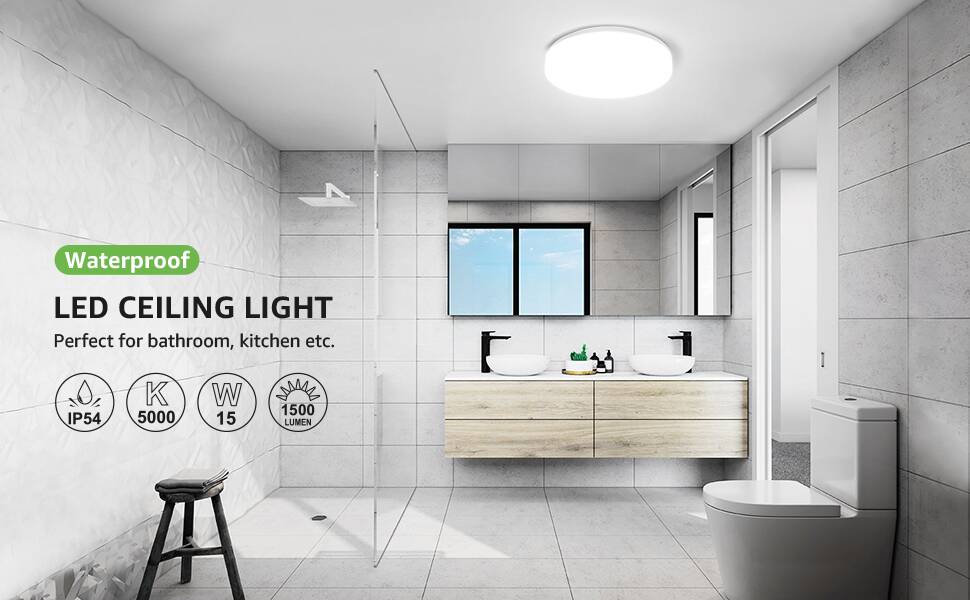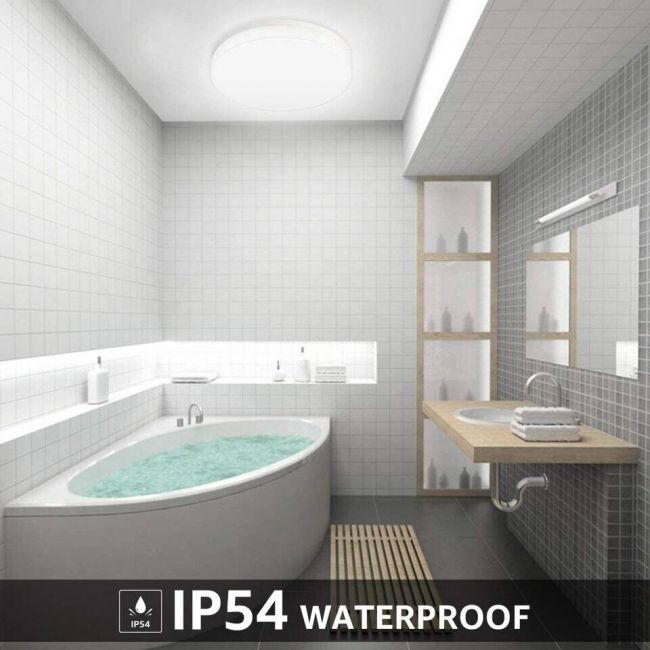Most bathrooms have small or no windows, so natural light can be difficult to come by. To make up for this more is needed to illuminate the space; the lighting must also contribute to the aesthetics. Phillip Pini from Crestron suggests “not being afraid to play up the lighting” to make up for the absence of natural light. Be strategic about where you put lights; each light source should serve a specific function.
But how can you determine what would work best in your area? Should I just use regular ceiling lights for ambient lighting, or would downlights have a bigger impact? It might be difficult to know what to pick and where to put it.
Safety Bathroom Lighting
All bathroom fittings should, of course, be waterproof. The ingress protection (IP) rating indicates how well protected the fixture is against dust and moisture.
What amount of IP rating can be utilized where the bathroom is governed by stringent electrical safety standards? Zone 0 is the interior of the bathtub or the shower basin, and only completely submersible goods with an IP67 rating are permitted in this area, as explained by Sally Storey of John Cullen Lighting. Zone 1, just over the tub or shower, calls for IP65 fixtures. Zone 2 includes the space 0.6 meters beyond the bath and basin’s edge and 2.25 meters above the floor. The IP44 standard is required for use here.
Schedule Your Bathroom Lighting Design in Advance
Bathroom lighting should be planned out from the outset of the project, and if feasible, the alternatives should be discussed with a professional lighting designer and installer
Why, you ask? Crestron’s Phillip Pini explains: “By selecting where you need the lights to go at an early stage, you can determine where you will need to install essential wiring, and budget for an adequate number of fittings and the control choices you wish. The mood and atmosphere of a room may be drastically altered by the lighting, so it’s important to think about that as well.
Layer Your Bathroom Lighting
The key to an effective bathroom lighting design is to use many levels of light from various sources. Lighting designers utilize ambient, task, and accent lighting to create spaces that are functional but may also, depending on the style you’re going for, have a calming, spa-like aspect, similar to how interior designers use color and texture to enhance the appearance of a room.
Incorporate Ambient Lighting
Bathrooms benefit greatly from ambient lighting, also known as general lighting, which illuminates the whole space so that you can move around safely While downlights are a good option for ambient lighting, it’s best not to install them in a grid pattern. In its place, consider the why and where of lighting needs.
Sally suggests placing a directional LED downlight adjacent to a tiled or stone wall to “highlight finishes” by producing streaks of light reminiscent of rushing water. Put one over the toilet or towel rail, and put another near the sink to illuminate the area.
A bathroom with a ceiling higher than three meters might benefit from LED ceiling lights that serve as both a point of interest and a visual anchor. James Bassant of Astro cautions, “Don’t rely on the chandelier’s light alone; it won’t provide the right mood on every occasion.” It also has to have an appropriate IP rating for the area.
Consider Task Lighting
Fine-detail tasks like putting on makeup or shaving require a particular sort of light, called task lighting.
Light up the area around the mirror from different angles to prevent harsh shadows on people’s features. Ben Rousseau, the owner of Rousseau Design, says that “if there is too much light coming from above, it will cause shadows beneath the eyes, while if there is too much light coming from the front, it will be unsettling.”
Storey says that “for larger bathrooms, illuminating a mirror with an LED light strip adds a wow element and extra glitz to the decor.”
If your bathroom is too contemporary or compact for wall lights, a mirror with built-in illumination might serve the same purpose, especially in a cloakroom.
Take Control
Knowing where you want to put the lights in the bathroom and the impact you want them to have are just half the battle. Having two distinct lighting circuits allows you to independently regulate both task lighting and decorative lighting.
However, a lighting system managed by a touchscreen panel is the optimal choice. Then, you may configure several parameters in advance to your liking. In the morning, the lights may be set to come up gradually and reach a daylight level, and in the evening, Phillip continues, “they can be set to fade to provide a relaxing environment in which to rest. In combination with LED lighting, occupancy sensors can cut down on energy waste caused by leaving lights on in empty rooms.”





